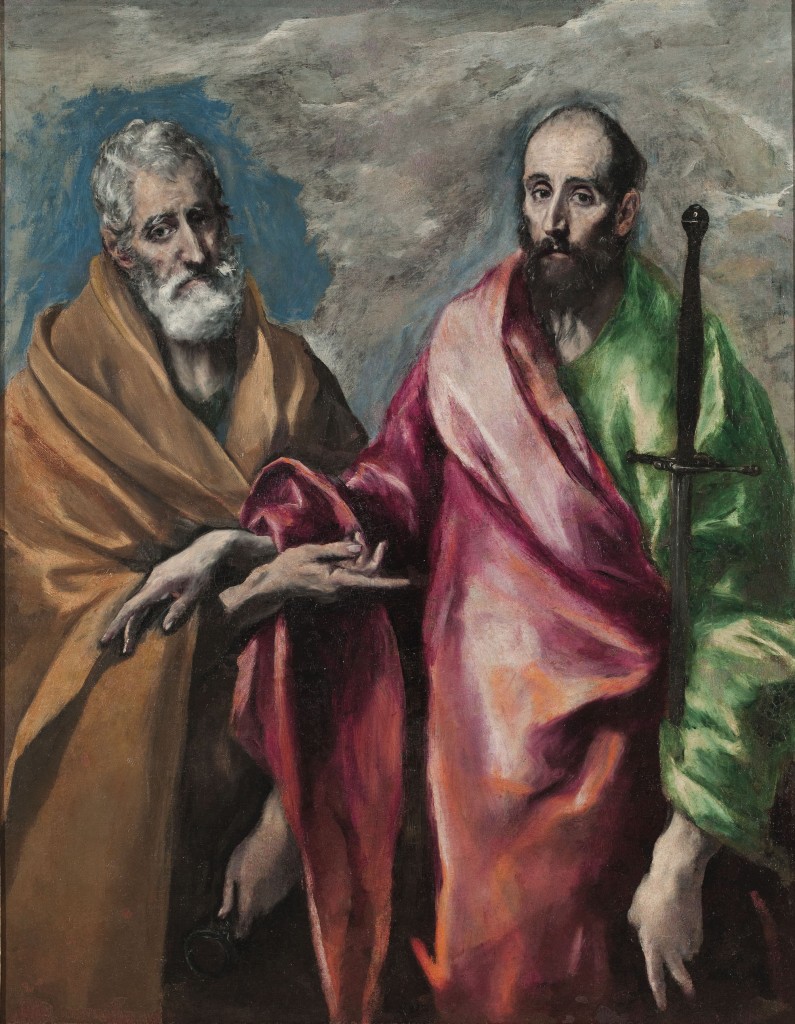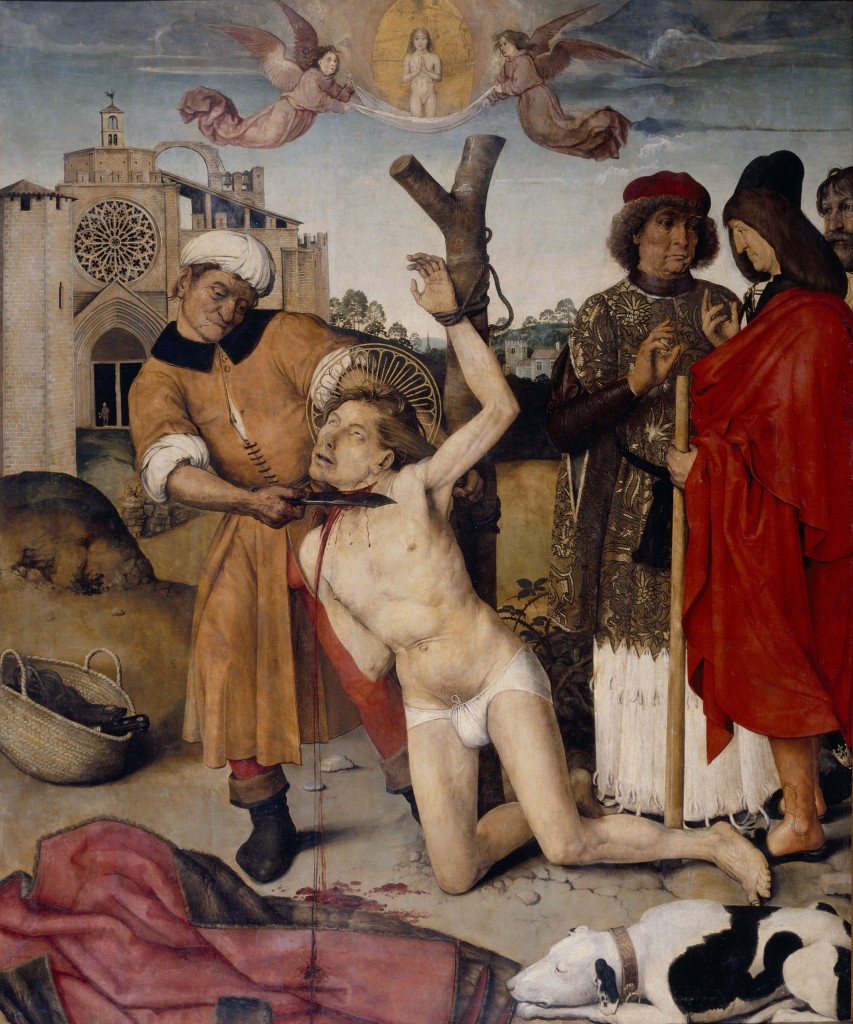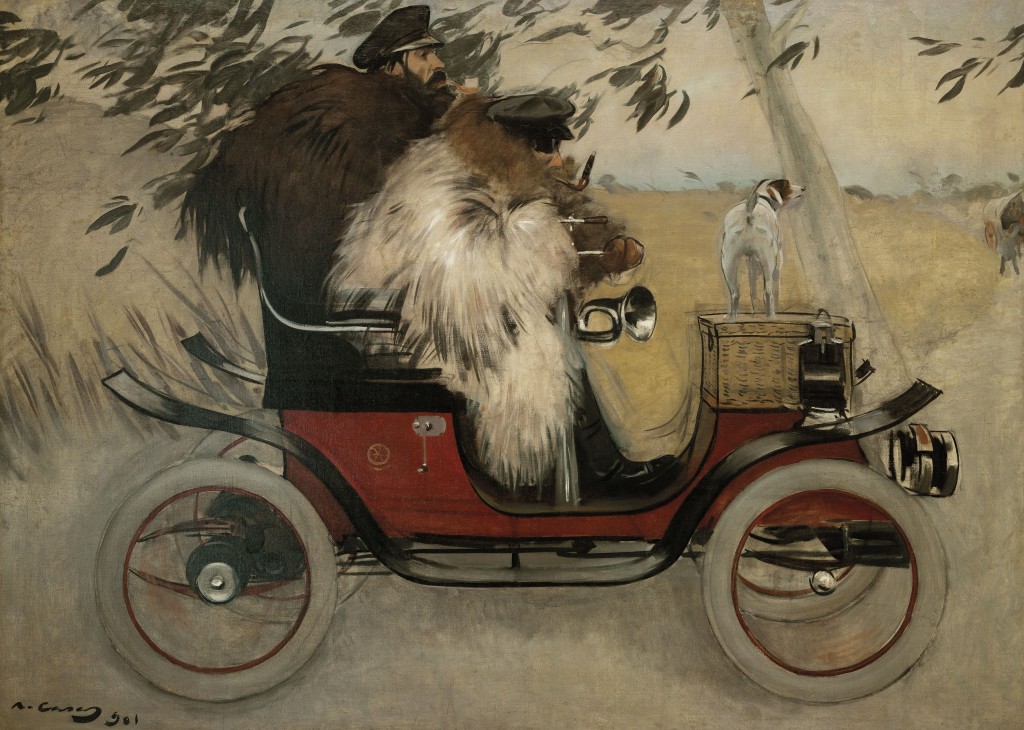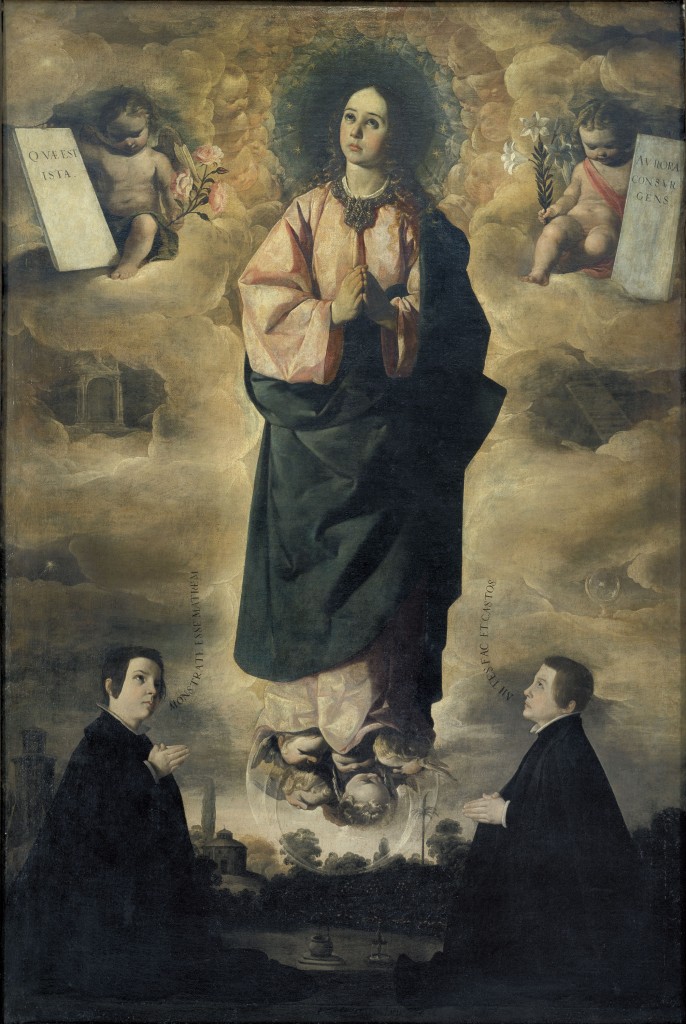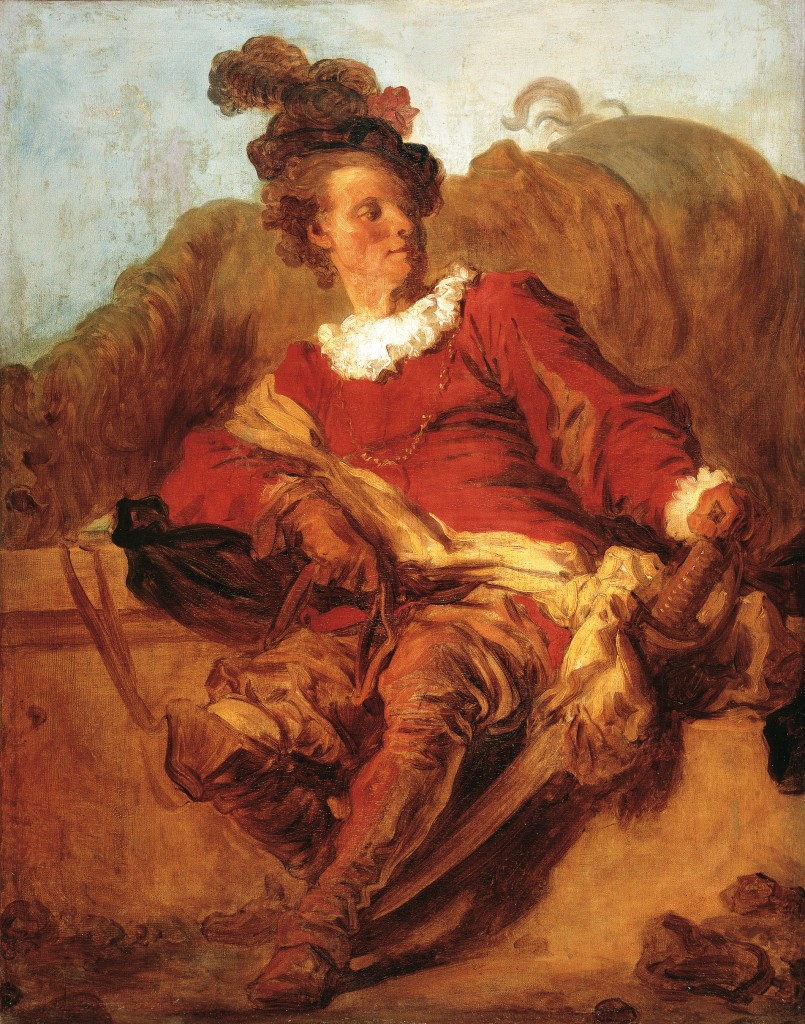With this post we will be continuing with the series of Curiosities of the collection. We dedicated the first article to Modern Art.
Did you know that the modernity of El Greco was due to the mixture of two expressionist trends of the 16th century?
El Greco was a formal expressionist (thanks to Venice) and an anti-classic (thanks to Mannerism), two trends a long way away from the Hispanic taste of 1577 when he finally reached Toledo.
Just as the name indicates, El Greco is the pseudonym in Italian of a Greek painter called Doménikos Theotokópoulos. Born in Crete, he was educated in Venice, where painters such as, for example, Tiziano modelled the volumes by means of colour (the importance of the drawing was null), the result of which was a dematerialised painter. At a later stage, he settled down in Rome, where, along with Florence, the Mannerist style would triumph, which marginalised the imitation of nature and deformed the bodies as results of the movement (either because it was provoked by an external action or by an action of the soul).
Even though in life he enjoyed a certain fame and a number of clients, he would however subsequently be considered to be an extravagant painter. World fame arrived for him with the discovery of his painting from the middle of the nineteenth century onwards.
Did you know that Martiri de sant Cugat by Ayne Bru was incorporated in the museum in the motor car of the painter Ramon Casas?
One of the best paintings from the collection of art of the Renaissance and the Baroque was purchased in 1907, after a long and complex negotiation between Gaietà Barraquer, artistic adviser of the Bishopric of assessor Barcelona, and three illustrious members of the Catalan Board of Museums: Josep Pijoan, Raimon Casellas and Emili Cabot. Once the authorisation was received to go and pick it up from the monastery of Sant Cugat del Vallès, the most normal thing would have been to go there with a lorry, and carefully pack it. However, they didn’t want to wait, and they found Casas, who offered to pick up the work with his open-top car. They placed the painting on one of the seats and drove up and down the winding road of the Arrabassada holding it tightly with their hands. The historic episode of the entrance into Barcelona with the car of Casas, going down the passeig de Gràcia “with that trophy”, is described in two written chronicles, one by Pijoan himself (1928) and another by the writer Josep Pla (1959).
Did you know that this work is done with Sarral alabaster and that the author was the “discoverer” of these stones?
For years it was believed that this group of pieces representing the Dormition of the Virgin, from 1534-1537, had been made with marble imported from Italy, but the myth was put to rest when the material was analysed. It was alabaster, a material which wasn’t imported. The group of pieces was attributed to the artist from Valencia, Damià Forment, who a few years before, in 1527, in a lunch with the abbot of Poblet fixed his attention on a salt cellar made of alabaster which was on the table. The curiosity of the sculptor led him to locating some alabaster quarries close to the town of Sarral. The biggest altarpiece of the monastery of Poblet had been made from this material, as well as other subsequent works. The Sarral alabaster had been used on specific occasions from the medieval period onwards, but from that moment on and thanks to Forment, its exploitation would become a very important activity for the town.
Did you know that the dogma of the Immaculate Conception was not approved by the Pope until 1854?
Even though it was a very popular iconography, this doctrine has always generated an intense debate among Christian theologians throughout history. The Immaculate Conception of Mary is an exclusive privilege of the Virgin, according to which the Mother of God would be the only descendent of Adam and Eve conceived without the original sin, given that her conception already existed in the thought of God prior to the Creation of the World. After this belief had been widely spread at the end of the medieval period, in 1477, the Pope Sixtus IV positively accepted a postulate on this theme. The first artistic representation of an Immaculate Conception was identified with a work of the cathedral of Cahors, in France, from 1484. From that moment on, its representation increased and evolved, up until the Baroque art of the seventeenth century, with works such as that of Zurbarán, which would establish the definitive typology.
Did you know that the expression “dressed a l’Espagnol” doesn’t refer to the fashion of that period?
In the France of the 18th century to say that you “dressed a l’Espagnole” was the equivalent of saying you dressed in a picturesque and fantasy way. In reality it referred to an attire of the French style from the era of the Kings Henry IV and Louis XIII, who were the monarchs between 1589-1610 and 1610-1643, respectively. Therefore, it was like a burlesque game, and to say that you dressed a l’Espagnole was a synonym for saying that you were wearing clothes that were very out of date. Currently fourteen portraits are conserved of Fragonard of these characteristics, and the series is called “portraits of fantasy”. In 2012, there appeared in the art trade a sheet with drawings done in rapid way (the collection of portraits increasing up to as many as eighteen) and with some notes that allowed the personages to be identified. Under the painting of the museum there figure the letters “Chal”, that Blumenfeld (2013) identified to be Michel-Ange Challe (1718-1778), French painter, architect and writer.
Related links
Renaissance and Baroque, Online collection of the Museu Nacional d’Art de Catalunya
Collection history
Joan Yeguas
Renaissance and Baroque Collection curator

